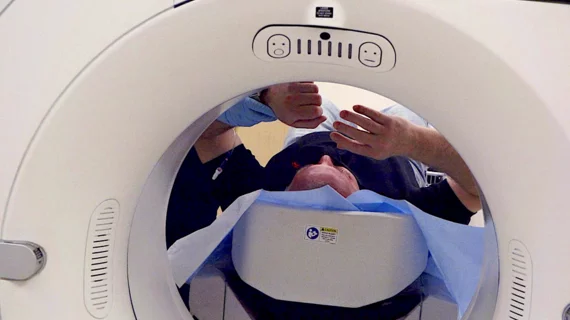FDA says CT scans sometimes damage implantable cardiac electronic devices
The U.S. Food and Drug Administration (FDA) has received reports of some electronic medical devices being damaged during computed tomography (CT) scans, sharing the latest in a new statement.
The agency said the issues have been associated implantable pacemakers and implantable cardioverter defibrillators (ICDs). Potential problems may include:
• Loss of consciousness
• Atrial fibrillation
• Bradycardia
• Palpitations
• Device failure
• Device reboot
• Data corruption
• Device reset to default pacing
• Early battery depletion
• In extremely rare cases, death
"Even though the reports we received occurred during CT scanning, there is little evidence that CT exposure was the cause of these events," the FDA said in a statement.
Although rare, the agency said electronic interference can be caused from radiation during CT scans and damage the device, causing devices to fail or not work normally. But, the FDA reiterated, CT continues to be the preferred imaging technology for people with implantable or wearable medical devices.
"The probability of any issues is extremely low. If a person has a wearable electronic medical device, it should not stop healthcare providers from performing an appropriate, medically necessary imaging procedure, such as a CT scan," the agency said.
Interference between CT scans and electronic medical devices
The FDA’s current understanding is that the interference is typically seen when the CT scanner is imaging the part of the body where the medical device is located. For example, when chest CT scans directly irradiate pacemakers, ICDs and implantable cardiac monitors.
For CT procedures in which the medical device is located within the scan range, the FDA said the impact on implantable devices can be minimized by using the lowest dose consistent to get diagnostic image quality. A lower dose delivery rate can also be accomplished by using a longer rotation time or lower pitch value, if appropriate for the CT protocol ordered.
Imaging exams that would involve scanning directly over the electronics of the implanted device for more than several seconds require additional care, because of the potential for pacing to be inhibited for 30 or more seconds or a defibrillating shock to be applied. Examples of these scans include CT perfusion studies or interventional procedures using CT fluoroscopy. If the procedure is urgently needed, careful monitoring of the device during and after the procedure is required.
"The probability that this interference could cause clinically significant issues is extremely low. The likelihood of damage occurring is lower when the radiation dose and the radiation dose rate are reduced," the FDA said.
However, the probability of damage increases with higher levels of radiation dose. High-dose radiation therapy procedures, such as gamma ray therapies, the FDA said wearable devices should be removed and left outside of the therapy room. A discussion should also tale place with the doctor about the FDA’s recommendations for wearable and implantable devices during high-dose radiation therapy procedures.
The FDA radiation safety statement was specific to CT, and the FDA is not aware of any confirmed interference from other imaging technologies such as X-ray, fluoroscopy, angiograms, or mammography. However, the FDA still recommends precautions should be followed to avoid any potential damage from radiation interference.
In terms of medical device electronic interference, the FDA said CT is safer than magnetic resonance imaging (MRI), which has higher levels of interference and has well known tendencies to cause issues with medical devices unless they are rated as MRI safe. Medical devices are labeled as unsafe, conditional or safe for use in MRI. If a device is labeled MR conditional, instructions from the manufacturer can be followed for conditions that enable safe use in a MRI environment. If the MRI safety status of a device is unknown, the FDA said it should be assumed it is not safe to use with MRI.
FDA recommendations for types of electronic devices:
• Wearable diabetes devices (such as insulin pumps and continuous glucose monitors)
• Implantable electronic heart devices (such as pacemakers and ICDs)

